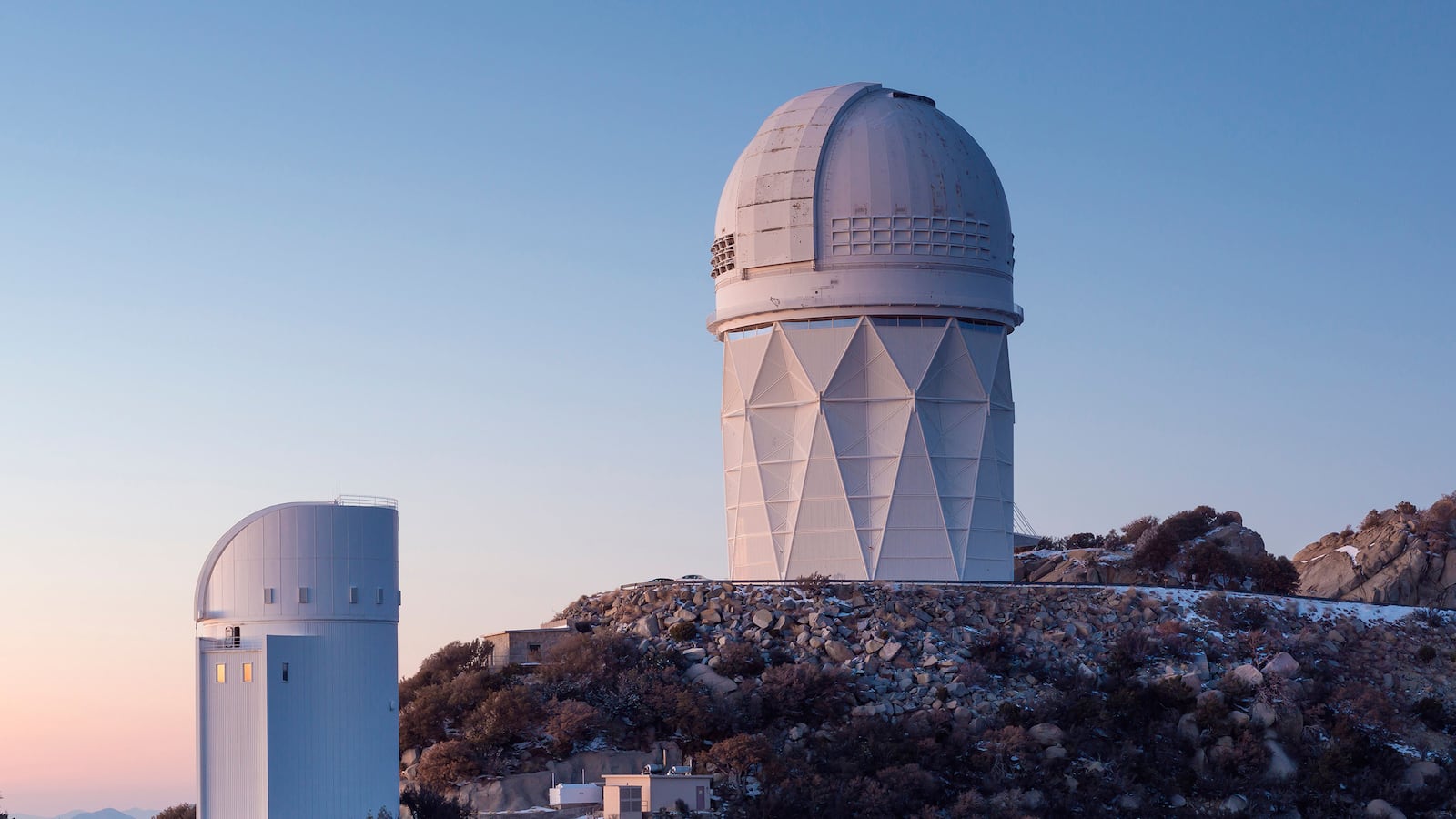Plans are in motion for a robot army 5,000-strong to survey the night sky in hot pursuit of dark energy.
This week the Department of Energy approved $56 million in funds for upgrades to the 40-year-old Mayall telescope at Kitt Peak National Observatory near Tucson, Arizona. The robots will operate from inside the Dark Energy Spectroscopic Instrument (DESI), a 2,000-lb gizmo that will replace the telescope’s current sensors in order to learn about dark energy, a phenomenon that has until now remained well, in the dark.
“Pretty much all we know about dark energy is that it’s there and that it’s blowing everything apart at an accelerating rate,” says DESI program director Michael Levy from the Lawrence Berkeley National Laboratory. These upgrades will be able to tell us the most basic things about dark energy, like if it’s the same everywhere and whether it varies over time.
“The apparatus is so sensitive that we can measure the expansion [rate] of the universe as far as 12 billion years ago. We can use [these rates] to predict the fate of the universe,” Levy says.
DESI is going to look at 30 million galaxies in order to understand how dark energy is pushing them apart. This all comes down to measuring the spectrum of light coming off each galaxy. The further away a galaxy is, the older and redder its light is. Using the signposts given by baryon acoustic oscillations, astrophysicists can then say when and where these galaxies emitted their light. All this data builds up a map going back in time which will be used to infer how dark energy has influenced galaxies throughout history.
The telescope has a field of view that’s six times as wide as the full moon. As the earth goes through the seasons the telescope will be able to see roughly a third of the celestial sphere. Over the five-year span of observations the team expects to complete ten sweeps of this visible swath of sky.
“The light [from these ancient galaxies] bounces off the 4-meter reflective mirror, goes through six correcting lenses, and then lands nicely focused on the surface of these robots,” Levy says. The pea-sized robots sit on an 80-cm wide grid. Each has a shoulder and elbow that allows micron-level positioning of the end of a fiber-optic cable anywhere within a tiny circle.
“They pivot using the same motors that cellphones use to vibrate,” Levy explains. “There’s enough density of galaxies out there that [within each circle] each of the robots have no trouble finding a galaxy to observe.”
The other end of each cable will have a spectroscope to determine the where and when of each galaxy. “Every 15 minutes we take a new exposure, then it takes a few seconds for the robots to reposition all the cables, and then every so often we’ll spend half a minute to reposition the telescope,” he says. “Ten-thousand exposures with 5,000 measurements per exposure comes to 50 million attempted readings. We expect a significant fraction of those spectra will be usable.”
“The project was originally proposed to the government back in 2009,” Levy says. “It takes a long time to get science projects of this scale formulated and into budgets. We consider ourselves very fortunate to have proposed this in 2009 and find ourselves here in 2015 with a great project.”
The corrector lenses will be assembled next year and will be installed in 2017. It’ll take a year to put DESI together, and the team will begin taking data in 2019.
“If there are gradations [in the field of dark energy] we’ll be able to build a 3D map. If there isn’t any variation the map will be kind of boring, but it’ll still be an amazing result,” Levy says.
What is learned from this experiment will be then put into supercomputers that will, according to Levy, “simulate how the universe manufactured itself to be what it looks like today.” Levy compares the history of the universe to a cooking pot of soup: “This experiment will go a long way in terms of figuring what ingredients we have to put into the soup to make it come out.”






